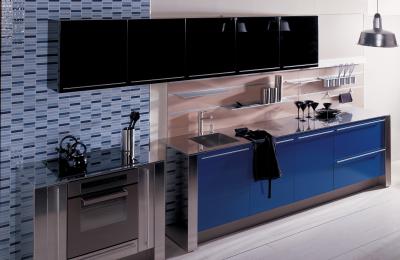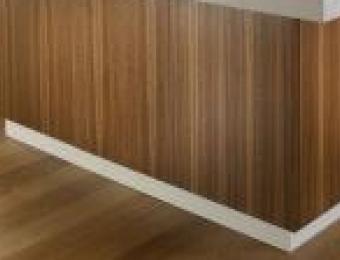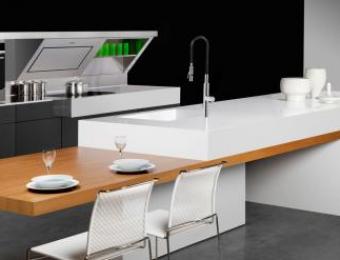
Most cabinets are made using solid timber, or an engineered timber product like particleboard or medium density fibreboard (MDF) with a layer of plastic laminate (e.g. melamine) over it. Having said that, however, there are other materials that can be used, and in particular a range of choices in terms of cabinet door materials to help enhance the look of your kitchen.
Below is some information about the different sorts of materials that can be used on cabinet doors, and how they perform:
High pressure laminate (HPL) and low pressure laminate (LPL)
HPL and LPL (collectively referred to as 'decorative laminates') are easily the most common of door coverings because they're affordable, and do a great job of resisting wear and tear, as well as dry and heat. They're also resistant to scratching and cracking.
There are strict standards that apply to how decorative laminates are manufactured and their properties, governing things like their thickness, anti-microbial / anti-bacterial properties, fire retardant properties, resistance to wear and so forth. Decorative laminates should adhere to Australian Standards (AS/NZS 2924.1 and AS/NZS 1859.3), and may also come with certain 'green' certifications based on tests for their emissions of volatile organic compounds (VOCs).
Timber and timber veneers
Timber veneers are thin sheets of timber that are either sliced or peeled from a larger piece of timber. These are used to give cabinetry a timber-constructed look where full timber construction is more expensive or impractical.
Vinyl film
Vacuum sealed vinyl is another alternative. Cabinet doors are wrapped in vinyl that is then heat sealed, creating a moisture-proof envelope around the door. Vinyl sealed surfaces installed near ovens or other heating appliances will need a heat shield, as per the oven manufacturer’s specifications.
Glass
Glas can look fantastic, and can turn your crockery into a design feature in and of itself. Any glass you use in cabinetry is required to meet BCA requirements and the Australian Standard AS/NZS 1288 - Glass in Buildings-Selection & installation in terms of human impact and serviceability.
Paint/lacquer
Paint or lacquers can be used as a surfaces for your cabinets, but they must only be applied according to the manufacturer’s recommendations.
Stainless steel or aluminium
Metal doors, or those with metal veneers are easily cleaned and hygienic. In most cases metal cabinet doors or veneers are made from either stainless steel or aluminium.



